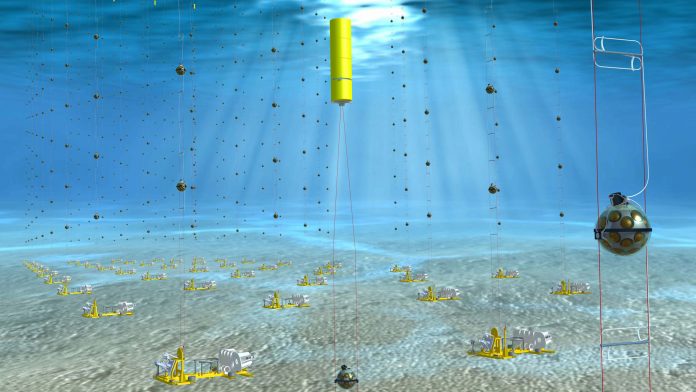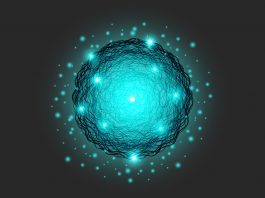The search for the neutrino mass hierarchy is one of the most active and important areas in neutrino physics.
More than 90 years after Pauli postulated the neutrino as a desperate remedy to preserve energy conservation in beta decay, many fundamental physical properties of the neutrino remain yet to be understood. What is the neutrino mass scale? What is their mass ordering? What are their electromagnetic properties? Are neutrinos identical to anti-neutrinos – the so-called Majorana neutrino hypothesis?
Initially introduced into the Standard Model as a massless fermion, it was only at the end of the 20th century that it became possible to prove that neutrinos possess small, non-zero mass. This result opened a window to new physics beyond the Standard Model.
Neutrino mass
The requirement for neutrino mass emerged in 1968 when Ray Davis observed a deficit of neutrinos arriving from the Sun, compared to solar model flux predictions. This represented the birth of the so-called ‘solar neutrino problem’. Bruno Pontecorvo soon provided an interpretation of this deficit in terms of neutrino oscillations – transforming electron neutrinos into muon neutrinos – which in turn implied the presence of neutrino masses.
The ‘solar neutrino problem’ would be confirmed experimentally in the GALLEX and SAGE radiochemical experiments, followed by Cherenkov detection of neutrinos in the Kamiokande and Super-Kamiokande detectors, and finally – in a masterful way – at the Sudbury Neutrino Observatory (SNO). In parallel to these studies of solar neutrinos – 30 years after the Pontecorvo conjecture – the Super-Kamiokande collaboration’s analysis of muon neutrinos produced by cosmic rays in the atmosphere and crossing the Earth vindicated the groundbreaking hypothesis of the Italian physicist.
The oscillation theory was subsequently modernised by interpreting neutrino oscillations as a quantum phenomenon in which a neutrino produced in one of three specific flavours (νe, νμ, ντ) is detected to have different flavour after propagating a certain distance, known as the ‘baseline’. This phenomenon can only be explained if neutrinos have mass. In this model neutrinos have three mass eigenstates, commonly denoted ν1, ν2, and ν3 with the corresponding masses m1, m2, and m3.
In order to oscillate, flavour eigenstates must be an orthogonal mixture of mass eigenstates. Physicists attribute this phenomenologically in terms of oscillations through a neutrino flavour mixing matrix which contains mixing angles, and mass squared differences between mass eigenstates (∆mij2=mi2-mj2). Therefore, the observation of neutrino oscillations demonstrate that mass differences do not vanish and that consequently neutrinos are ‘massive’. If neutrinos propagate in matter (e.g. the Earth), they can interact with electrons via the weak interaction, which alters the oscillation probabilities. Such an effect, formalised by Stanislav Mikheyev, Alexei Smirnov, and Lincoln Wolfenstein (the so-called ‘MSW effect’) enhances the oscillation probability. Therefore, we need to distinguish between neutrino oscillations in a vacuum and neutrino oscillations in matter.
Physics beyond the Standard Model
Oscillations experiments with solar neutrinos, with atmospheric neutrinos – as well as with neutrinos from nuclear reactors and accelerators – have provided the first evidence for physics beyond the Standard Model of particle physics. These results are of great relevance not only for particle physics, but also for cosmology and astrophysics. Neutrinos are likely to be the most abundant fermion in the Universe. Progress in the knowledge of the physical properties of the neutrino has important consequences for a better understanding of the structure and evolution of the Universe.
Current oscillation data can be remarkably well-fitted in terms of two mass squared differences, termed the solar mass splitting (∆m221 ≈ 7.6 × 10-5 eV2) and the atmospheric mass splitting (∆m231 ≈ 2.5 × 10-3 eV2). It is conventional to label the lightest massive neutrino as ν1so that ∆m221 > 0. In contrast, it is still not known whether m3 is heavier or lighter than m1. This is referred to as the question of neutrino mass ordering (NMO) or mass hierarchy. The two possible ordering scenarios are conventionally referred to as normal ordering (NO), in which case m1 < m2 < m3, or inverted ordering (IO) with m3 < m1 < m2.
Currently, neutrino mass ordering is one of the most important questions to be solved in the field of neutrino physics. It impacts the limits on the sum of neutrino masses in cosmology, has important implications for the determination of neutrino character – Dirac or Majorana – through neutrino-less double beta decay, and could lead to a better understanding of the mixing in the lepton sector.
Currently, among the three available methods to extract the neutrino mass ordering (oscillations, neutrino-less double beta decay searches, and cosmological observations), the leading probe comes from oscillations in matter, measured at long-baseline accelerator experiments (DUNE, T2HK) or atmospheric neutrino (ORCA, PINGU) experiments in combination with medium baseline nuclear reactor experiments (JUNO, RENO-50).
The comparison of data from all these experiments, each one exploiting a different neutrino oscillation mechanism, will greatly improve the sensitivity to the neutrino mass hierarchy. In the following section, we briefly detail two of these projects; JUNO and ORCA.
The JUNO experiment
JUNO (Jiangmen Underground Neutrino Observatory) is a 20-kiloton liquid scintillator detector currently under construction near Jiangmen in South China. Deployed in an underground laboratory with a 700m overburden, it is designed to measure the disappearance of MeV-energy electron anti-neutrinos produced by the Yangjiang and Taishan nuclear powerplants at a distance (‘baseline’) of approximately 53km. Because of the relatively short oscillation distance, the study of the mass hierarchy in JUNO is not affected by matter effects.
Electron anti-neutrinos from nuclear reactor convert, in the detector, to positrons via the inverse beta decay process on protons. This results in a characteristic pair of prompt and delayed photon showers, which are detected by about 17,000 20-inch photomultiplier tubes (PMTs). The large number of photo-electrons per event (1200 p.e./MeV) allows for a percent-level neutrino energy resolution. As a result, the NMO can be determined through a precise measurement of the oscillatory fine structure imprinted on the neutrino energy spectrum.
ORCA
ORCA (Oscillation Research with Cosmics in the Abyss) is the low-energy branch of KM3NeT (Cubic Kilometre Neutrino Telescope), the next-generation of neutrino Cherenkov detectors currently being built in the Mediterranean Sea with the aim of measuring the neutrino mass ordering and searching for high-energy cosmic neutrino sources. The ORCA detector will consist of a dense configuration of 115 vertical ‘strings’ of PMTs at a horizontal spacing of 20m, anchored on the seabed off the shore of Toulon, France. Each string supports 18 digital optical modules (DOMs) with a vertical spacing of nine metres. The DOM developed by the KM3NeT collaboration comprises a transparent 17-inch diameter pressure-resistant glass sphere, housing 31 three-inch PMTs with their associated readout electronics and additional sensors. ORCA will constitute a three-dimensional array of photo-sensors that will detect the Cherenkov light produced by relativistic particles emerging from neutrino interactions. With this configuration, ORCA will focus on the study of neutrino oscillations through the Earth’s mantle, affected by the matter-effect, in the 1-100 GeV energy range, using a target of 5.7 M tons of instrumented sea water.
Neutrino oscillations are one of the most important discoveries of the last 20 years. They have proved that the neutrino must be a particle with mass and have opened a window to new physics beyond the Standard Model. Despite this important discovery, neither the neutrino mass scale nor the mass hierarchy is yet known. The mass spectrum of the neutrino is a fundamental issue with great impact in particle physics as well as in astrophysics and cosmology. Experimental projects using reactor neutrinos, atmospheric neutrinos, or neutrinos produced in accelerators that are scheduled to come to fruition within the next few years should fix the mass hierarchy of neutrinos.
Please note, this article will also appear in the sixth edition of our quarterly publication.









